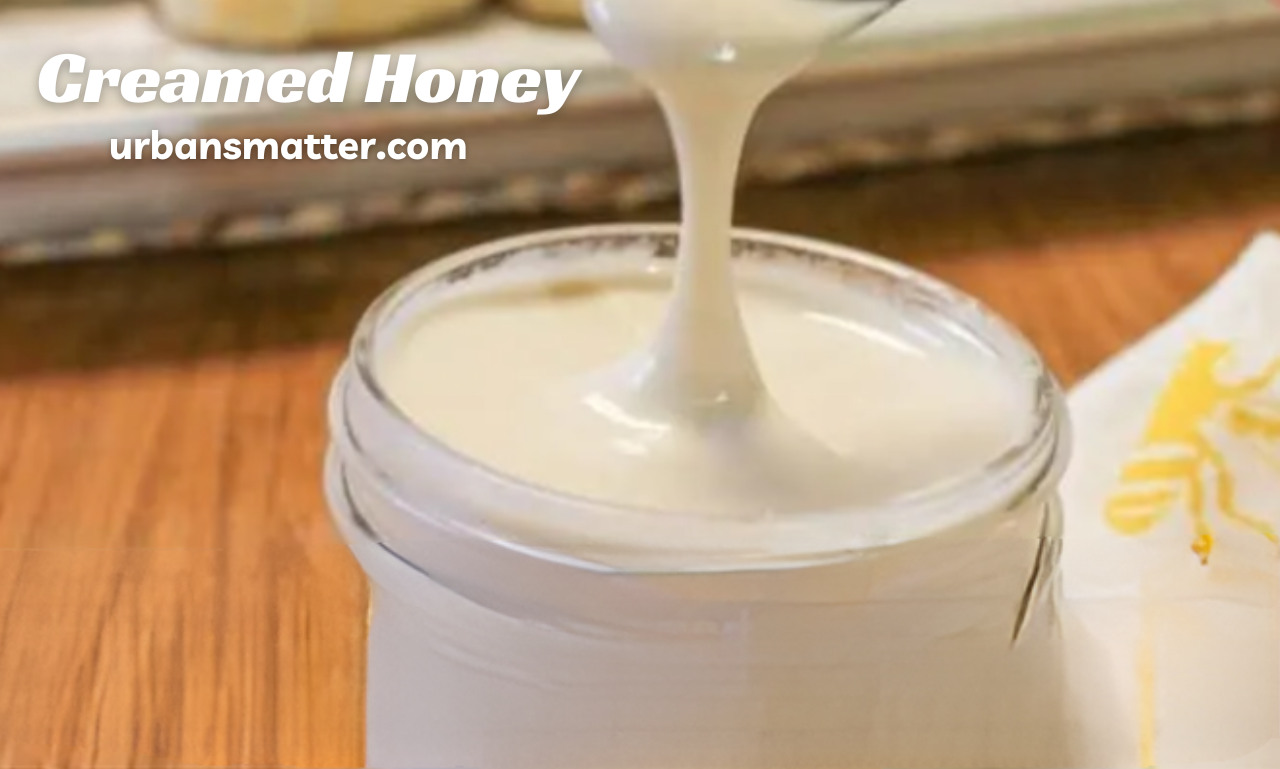Home and Gardening
OpenHousePerth.net Insurance: Best Coverage & Affordable Rates

Nothing is as crucial as choosing the right insurance provider when it comes to insuring your home and your wealth.OpenHousePerth.net Insurance stands out as a reliable partner that provides variant insurance solutions for different needs. Let’s explore what OpenHousePerth.net Insurance is, the types of insurance it offers, the benefits, its role, how it works, and how it compares with other providers.
What is OpenHousePerth.net Insurance?
OpenHousePerth. net Insurance is an insurance company that operates from Perth and it offers home indemnity insurance as well as other related products. They are largely centered on customer support and availability, which seek to provide their clients with a variety of risks to secure their homes. They have services that suit all kinds of properties and specific requirements hence a perfect fit for property owners in Perth and beyond.
Types of Insurance Coverage to Consider
When exploring insurance options, it is important to understand the different types of coverage available. Here are most common ones:
Homeowners Insurance
It is general insurance that concerns the physical appearance of your home, items inside it, and care of other people’s property. It also covers extra living expenses in case your home is not inhabitable due to a particular event.
Landlord Insurance
For the landlords, this insurance offers protection of the structure of the building, liability and loss of rent income. This type of insurance is especially important for persons whose property is fully or partly leased.
Contents Insurance
This policy is aimed at covering your goods and/ or property which are inside the premises of your house. These may include household utensils such as a table, refrigerator, clothes and other accessories within the house. This is especially valuable for people who rent apartments, houses, etc., in which they do not have to insure the structure itself.
Building Insurance
Building insurance is usually where you take an insurance policy to cover your house or any other building. This is especially important for homeowners and can be linked to cover content for an all-inclusive policy.

Benefits
- Comprehensive Protection: Affordability without compromising quality presenting a wide range of coverage offers to fit various requirements to cover all areas of your property.
- Competitive Premiums: One standout feature of its services is that it offers them at reasonably cheap prices without having to sacrifice quality of service.
- Expert Support: Availability of well-endowed and courteous personnel, particularly the customer service providers on matters concerning claims and policies.
- Customizable Policies: Tariffs that enable clients to select amounts of protection suitable to their needs and deliver comprehensive coverage at affordable prices.
- Peace of Mind: Personal peace knowing that your property and most of the things you own are protected and secure from various unpleasant occurrences.
The Role of OpenHousePerth.net Insurance
OpenHousePerth. net Insurance has a significant presence in the local insurance market where it offers sound and reputable insurance products for homeowners. They assist in managing the cash risks of property investment by establishing that clients can obtain insurance and easily bounce back in case of misfortunes. Since they provide customized insurance plans, they provide essential coverage for the people of Perth which helps to support stability in the community.
How OpenHousePerth.net Insurance Works
- Policy Selection: Select from the options of insurance policy you require from among the ones currently available.
- Customization: For the policy to fit your needs, you might redesignate coverage levels, decide on the amount of deductible, and even add on certain endorsements if at all required.
- Premium Payment: After selecting the preferred payment frequency, make the premium payment for the chosen amount of time (annual, at least 6 months, or monthly).
- Policy Activation: If the premium is paid, the policy is activated and Medicare starts being effective immediately.
- Claims Process: If the situation does transpire into a claim, it is advisable to contact OpenHousePerth. net Insurance and in the process fill the report we are about to provide to them. Humble claims

Comparing Open House Perth Insurance with Other Providers
Compared to other insurance providers, OpenHousePerth.net Insurance offers several distinct advantages:
- Localized Focus: Unlike general insurance companies, OpenHousePerth.net specializes in Perth properties, providing more relevant and effective coverage.
- Tailored Policies: Customizes insurance plans to address specific local risks, such as bushfires and floods.
- Customer Service: Offers superior customer support with a focus on the Perth community.
Why Choose OpenHousePerth.net Insurance?
Choosing OpenHousePerth.net Insurance means partnering with a provider that truly understands your needs as a Perth property owner. The organization Of OpenHousePerth.net is credible, well endowed with specialized knowledge, offers a broad range of coverage options and highly evaluates customer satisfaction. Therefore,OpenHousePerth.net Insurance will remain the most appropriate option to safeguard your home or investment property.
Conclusion
OpenHousePerth. net Insurance as a company that offers home insurance services in Perth makes it on the list of outstanding home insurance service providers. Due to flexibility in policy plans, fairly affordable charges, and customer-oriented business strategies, they are poised to fulfill the variety of demands of homeowner policies. By choosing Open House Perth. Net Insurance you are purchasing good security for your property and property, then you are ready to handle each chance.
FAQs
Q: What types of insurance does OpenHousePerth.net Insurance offer?
OpenHousePerth.net Insurance offers home, contents, landlord, building, and comprehensive coverage options.
Q: How do I file a claim with OpenHousePerth.net Insurance?
Contact their customer service team to file a claim. They will guide you through the process and ensure a prompt resolution.
Q: Are the policies customizable?
Yes, OpenHousePerth.net Insurance provides flexible policy options that can be tailored to your specific needs.
Q: What makes OpenHousePerth.net Insurance different from other providers?
Their local expertise, customer-focused approach, and customizable, affordable policies set them apart from other providers.
Q: How can I get a quote from OpenHousePerth.net Insurance?
Visit their website or contact their customer service team to get a personalized quote based on your coverage needs.
Home and Gardening
Corteiz Shop And Corteiz Clothing

Welcome to the colourful global of Corteiz Shop and Corteiz Clothing, wherein style meets tradition in a extraordinary way. If you are looking for portions that now no longer handiest increase your cloth cabinet however additionally inform a story, you’ve got come to the proper place. Corteiz sticks out with its precise designs and an ethos that resonates with many. This isn’t always simply garb; it is a way of life logo that celebrates individuality and creativity.Dive into this text as we discover the wealthy records of Corteiz, discover its underlying philosophy, spotlight a few standout merchandise, and percentage approaches you may guide this interesting motion in style. Whether you are a long-time fan or new to the logo, there may be some thing right here for all people keen to include fashion with substance. Let’s get started.
History of Corteiz
Corteiz originated as a grassroots logo, born from the colourful streets and tradition of city life. Founded through visionary clothier Conor Izzard in 2017, it quick captured interest for its precise technique to streetwear.The adventure started with a easy challenge: to create garb that resonates deeply with folks who recognize authenticity. The logo’s early days had been marked through small drops and exceptional releases, fostering a faithful network round its wonderful aesthetic.As Corteiz grew, so did its influence. It embraced ambitious designs infused with cultural references that communicate to numerous audiences. This mixture of creativity and relatability set the degree for its upward thrust in reputation in the style global.Through collaborations and attractive storytelling, Corteiz has carved out a spot that is going past mere clothing—it is approximately identification and self-expression woven into fabric.
The Philosophy behind Corteiz
Corteiz embodies a philosophy rooted in self-expression and individuality. Each piece is designed now no longer simply to be worn, however to inform a story. The logo believes that garb must empower wearers, permitting them to show off their character boldly.At its core, Corteiz promotes authenticity over trends. This technique encourages human beings to include who they’re as opposed to conforming to fleeting styles. It’s approximately developing a network wherein area of expertise flourishes.Sustainability additionally performs a good sized position in Corteiz’s philosophy. The logo is devoted to moral practices and sourcing substances which have minimum environmental effect. They intention for transparency in the course of their deliver chain.This willpower extends past style; it fosters social duty as well. By assisting nearby artisans and initiatives, Corteiz seeks to uplift groups at the same time as crafting terrific clothing that resonates with the current individual.
Unique Features of Corteiz Clothing
Corteiz Clothing sticks out for its exquisite craftsmanship. Each piece is meticulously designed and built to make certain each fashion and durability. The logo embraces individuality, providing ambitious designs that resonate with numerous tastes. The images frequently replicate city tradition, creating a declaration with out announcing a word.Sustainability is on the coronary heart of Corteiz’s challenge. They prioritize green substances, making sure their garb minimizes environmental effect at the same time as maximizing consolation.Another precise element is the network engagement. Corteiz regularly collaborates with nearby artists, developing limited-version portions that inform tales via style.Inclusivity defines their sizing options. Corteiz Clothing ambitions to cater to all frame types, celebrating range in fashion and fit. This technique fosters a feel of belonging amongst wearers, making every object extra than simply garb—it is an expression of identification.
Top Products from Corteiz Clothing
Corteiz Clothing gives numerous standout merchandise that replicate its dedication to great and fashion. One of the gang favorites is their signature hoodies. These portions integrate consolation with placing designs, making them ideal for any informal outing.Another must-have is the Corteiz joggers. They offer each capability and flair, becoming snugly at the same time as permitting freedom of motion. Ideal for workout routines or lounging, they’re flexible sufficient to in shape numerous occasions.For people who lean in the direction of streetwear aesthetics, the photograph tees are a sport changer. Bold
How to Support the Mission of Corteiz Clothing
Corteiz Clothing isn’t pretty much clothing; it is a motion. Supporting their challenge is easy but impactful. Start through exploring their collections and locating portions that resonate together along with your fashion. When you put on , you are making a declaration.Provide comments at once to Corteiz Clothing concerning what resonates maximum with you as a consumer. Brands thrive on network input, and your voice subjects immensely in shaping destiny offerings.By deciding on Corteiz Clothing , you are now no longer simply buying garb—you are embracing a way of life that champions authenticity, creativity, and connection in the global of streetwear style. Each buy helps an ongoing adventure in the direction of significant expression via garb.
Home and Gardening
Creamed Honey

What is Creamed Honey?
Creamed honey, or whipped honey, spun honey, or churned honey, is honey that has been processed with the intent to control the new formation of crystals. Creamed honey looks very similar to normal liquid honey; however, its texture is more uniform and spreadable than the regular liquid honey that gradually becomes grainy when left for too long. This is done through the governorin promoting formation of small, uniform crystals, hence the creamy nature of the product.
The History of Creamed Honey
Creamed honey was developed in the early 1900s and refers to the process of adding whipped honey to honey. The Elton J. Dyce patented an approach in 1928 to create creamed honey through placing liquid honey in a fine crystallized seed and then storing it perfectly at a desirable temperature. This process is referred to as the Dyce method and it is currently one of the most widely used processes in the preparation of cream honey.
How is Creamed Honey Made?
The process of making creamed honey involves several steps to ensure the perfect consistency:
- Selection of Honey: It mainly begins with pure liquid honey which is known to offer a superior quality. The quality of the finished product mainly determined by the honey with which the product is made.
- Pasteurization: In order to pasteurise it, the honey is warmed so that it kills the yeast that could lead to fermentation and also melts its big crystals if it contains any.
- Seeding: The possibility of making creamed honey must begin with the seeding step. Liquid honey and a small amount of cream of honey containing fine crystals are combined in the production process. This seed honey is also used to model the nucleation of new crystals.
- Controlled Crystallization: The mixture is also left to cool at a refrigerator temperature of 57°F (14°C) for one week or until the brew forms at the surface. At this stage, honey turns into a crystallizing process where it acquires a creamy consistency.
- Packaging: Once it has solidified to the correct texture, honey is packaged and consumed or used in other ways.
Benefits of Creamed Honey
Creamed honey offers several advantages over regular liquid honey:
- Texture: It has a creamy texture so it does not slide off bread toppings, muffins, and pastries but instead, it glides and sets easily.
- Flavor Retention: Creamed honey crystallizes slowly in a controlled way, and therefore the honey maintains its flavor for a long time than the liquid honey that has crystallized naturally.
- Shelf Life: The process of crystallization, therefore, is done in a controlled manner hence preventing the occurrence of hard/dense and grainy consistency that would be detrimental to the honey’s shelf life.
- Versatility: Creamed honey is also very versatile and can be spread like butter, used as a sugar substitute with teas and coffee.
Culinary Uses for Creamed Honey
Creamed honey is commonly used in kitchen as it has a smooth texture, it also melts in the mouth and dissolves easily when used in cooking or baking. Here are some popular ways to use creamed honey:
- Spread on Bread and Pastries: To actually enjoy creamed honey, choose a good old piece of bread toast, a fresh bagel, muffin or even a croissant. This is easy to apply because it does not drip by having a porcelain like silk feel when applied.
- Sweetening Beverages: Taking a spoonful of the creamed honey and mixing it with the hot tea, coffee or even warm milk has the added bonus of sweetness as well as the creaminess from the honey.
- In Baking: Creamed honey can be applied as sweetener and it can be used in baking recipes where it helps to have the smooth rich texture in cookies, cakes and pastries.
- Flavoring Yogurt and Oatmeal: Creamed honey can be mixed into yogurt, oatmeal, and other similar foods to give that extra flavor sweetness without the use of extra sugar.
- Salad Dressings and Sauces: Creamed honey contains a thick texture which is very suitable for use as a complementary ingredient to salad dressings, marinades, and sauce.
Health Benefits of Creamed Honey
Like all honey, creamed honey offers a range of health benefits:
- Antioxidant Properties: Honey also possesses considerable antioxidant properties; it was found to be capable of containing free radical and moderating oxidation.
- Antibacterial and Antifungal: From the aforesaid arguments, one can conclude that honey is most commonly used for the remedy of simple cuts and infections due to its ability to disinfect.
- Soothing for Sore Throats: Sulfured is still consumed today and raw Honey traditionally used for soothing sore throat and coughs is still consumed today. It also can thicken easily in order to give it a barrier like consistency to the throat hence the throat is relieved of the discomfort that it possesses.
- Digestive Health: However, the utilization of the honey product can be to promote the gut health since honey is the prebiotic that helps in nurturing of the good bacteria in gut health for to body systems.
Choosing and Storing Creamed Honey
When selecting creamed honey, no other compound should be added, and the creamed honey is purely natural. The honey to be incorporated in the creaming stage should be carefully chosen because it determines the final taste of the product and its texture.
Storage Tips:
- Temperature: The product can be left at room temperature as it needs to be refrigerated only to preserve the shelf life of the creamed honey. Heating is not required and too much heat will make them hard as bricks and freezing is also not required for honey.
- Sealing: Other than this, make sure that the jar is tightly closed to avoid cartilage which will result in fermentation.
- Avoid Contamination: Try to maintain the cleanliness of the utensil that is to be used to scoop the honey so as not to interfere with any foreign elements.
Making Creamed Honey at Home
If you’re feeling adventurous, you can make creamed honey at home with just a few simple ingredients and tools. Here’s a basic recipe to get you started:
Ingredients:
- 1 cup of liquid honey
- 1 tablespoon of creamed honey (to act as a seed)
Instructions:
- Heat the Honey: To crystallize honey, simply warm the liquid honey to about 140°F (60°C) to melt all the crystals that it may contain. One important factor is to avoid heating the honey beyond a certain temperature as it destructs its natural composition.
- Cool the Honey: Make sure that the honey can reach about 95°F (35°C) or lower temperature that is possible in the process.
- Add the Seed Honey: Stir in the creamed honey thoroughly. This will provide the template for fine crystallization.
- Store and Wait: Pour the mixture into a clean container and store it in a cool place (around 57°F or 14°C) for 1-2 weeks. Check periodically until the honey reaches the desired creamy consistency.
- Enjoy: Once the honey has fully creamed, it’s ready to use. Store it at room temperature and enjoy its smooth, spreadable goodness.
Conclusion
Creamed honey is another type of honey, which is widely used and very important, primarily due to the special texture and taste. Owing to the products sticky texture, it can be employed in many culinary applications including creaming, sweetening food items and even recreational use such as sweetening beverages. Because creamed honey lasts longer and has a plethora of uses, it a perfect product to have at home.
Anyway, whether you have purchased it somewhere, or you have attempted to make it on your own, you will be having the best creamed honey whose taste is very delightful and natural. Enjoy creamed honey as a dessert and discover that this sweet delicacy could be much more the gratification of the sweet tooth could offer.
FAQs
Q: Is creamed honey the same as raw honey?
Creamed honey may be produced from raw honey but creaming is the controlled process of crystallization. This honey has not been filtered, heated or treated by using high temperatures to prevent it from crystallization.
Q: Does creamed honey expire?
Similar to other honeys, creamed honey has a very long shelf life provided that it is properly stored. That is why it does not spoil quickly, and Mongo has natural preservatives due to the low moisture content. But may turn dark or change flavor over time as is the case with browning.
Q: Can I use creamed honey in recipes that call for liquid honey?
Yes, creamed honey can be used in recipes that call for liquid honey. It will melt when heated, making it suitable for baking and cooking.
Home and Gardening
Budget-Friendly Zen Garden Ideas for Beginners

This article will provide Budget-Friendly Zen Garden ideas for every space, from large outdoor areas to tiny indoor corners.
Are you currently feeling like you are always on the go without a second to spare? Have you been searching for some peace amongst the chaos of everyday life? Look no further than a Zen garden! Designed by the Japanese, these beautiful masterpieces can bring calm and connection with nature right in your own home.
The Must-Have Features of Zen Gardens
More than just looking pretty, a true Zen garden embodies what nature’s ideal ecosystem is about. Below are some of the elements that must be included in this kind of garden:
• Rocks & Gravel:
Islands or mountains should be represented by smooth, rounded rocks as they symbolize stability and permanence in life. To depict water’s unending motion, think about raking the gravel around the rocks into continuous patterns that stretch across your garden.
• Sand:
Ripples on the sand should remind you of waves gently lapping against a shore. Imagine yourself sitting by an ocean or any body of water for hours without getting bored; that’s how peaceful and calming this feature is supposed to be.
• Plants (In Moderation):
Traditionally, these gardens have very few plants. However, if strategically placed, they will add life without overshadowing the simplicity associated with zen designs. Bonsai trees, ferns and succulents can all thrive in such environments so long as care instructions are followed to the letter.
How to Create Your Own Zen Garden: Step-by-Step Instructions
The beauty about zen-inspired yards is that they are flexible; regardless of how much space you have there is always a solution out there waiting to be implemented. Below is a simplified procedure for making one:Below is a simplified procedure for making one:
Find Your Quiet Place: Choose an area that gets sunlight
1. Finding Your Zen Spot:
Choose a corner of your home or your yard where there is not much energy and the spot is slightly bright. Ideally, such a place should be rather close and within a convenient reach to get to it any time one feels like having a break. Whether this is a bit of a room or a small portion of a patio, Zen garden ideas can be used for you.
2. Size Doesn’t Matter:
If space is a confining factor, do not let this be a hindrance. One might not expect much variety when it comes to Zen gardens, but there is a lot more variety than one may suspect. Even a drawer unit or a small shelf space can transform into an effective zone for meditation, it can be on your balcony or inside your house.
3. Embrace Natural Materials:
They are most profoundly designed to reflect the principles of Zen and to have the connection with the nature as its fundamental element. Probably the best thing would be to use natural features, such as rocks, gravel and sand, where possible. Such shallow trays or wash tubs reused from numerous uses could be idea for constructing a Zen garden indoors.
Zen Garden Ideas for Every Space
The beauty of Zen gardens is that one can adopt them regardless of where they live. Let’s explore some inspiring ideas to cultivate tranquility in any setting:Let’s explore some inspiring ideas to cultivate tranquility in any setting:
• Outdoor Zen Escape:
If you have a backyard or terrace or a deck, sunny space then feel free to try these ideas. Have garden edge stones; place rocks of different sizes to design a mini landscape, raze the ground and distribute the gravels in harmonizing pattern design and incorporate small water features like a table top fountain that will create the sound of water running.
• Indoor Zen Sanctuary:
Don’t have a yard? No worries! Build a serene environment that holds no clutter. Flat oval shallow dish can be used as the base of your decor; fill it with sand or small decorative pebbles. There are possibilities of having a mini bonsai tree to give life to the area or a moss garden that continues forever.
• Compact Zen Inspiration:
Do you need a house only for several people or you live in a large apartment? However, do not allow this to discourage you from decorating your home with a few items that is associated with zenne. To highlight corners, place some potted plants in such a way that they will hang down like curtains; one of the best options for such a purpose is the devil’s ivy. You could also hang Alternatively, depict a miniature of the world on a table using rocks, sand of different colors, and miniature people.
Bring your Zen garden to life
Once you’ve established the core elements, personalize your Zen garden to truly capture your essence of tranquility:Once you’ve established the core elements, personalize your Zen garden to truly capture your essence of tranquility:
•Light Up the Night:
Adorn with minor outdoor path lights that needs sun to recharge or with hanging outdoor lights. Flickering at night, they softly illume the area and are exciting, making one feel like they want to spend time outside longer.
•A Place to Rest and Reflect:
Fitted into a soft chair – much like a little bench or a placed flat rock – to create a place for one’s nap time, or if none of the above is available, simply to soak in the tranquility.
•Accessorize with Intention:
Mmm, keep it simple and easy, especially when focusing on the core concepts that help in cognitive comprehension. Rather, use a bamboo rake or anything you can use for decor because it maintains sand patterns nice and neat. Soothing tunes come from a wind chime. Let’s go for a wind chime if you want your ears tickled by the sound of soft melodies.
Your Personal Zen Oasis Awaits
Small gardens, known as Zen gardens, originate from concepts. There are a lot of tips here, but the overall idea is to simplify and create an environment that soothes. There can always be the traditional style with sand lines or could be something simple and modern. It does not really matter what kind of space is created, the important thing is to create a space that brings comfort and being present. Take in a deep breath and blow out any remaining tension; take a moment of solitude in the private sanctuary.
-

 Health11 months ago
Health11 months agoDiscover ://vital-mag.net Blog: Expert Tips for Total Wellness
-

 Business12 months ago
Business12 months agoTikTok Affiliate Marketing | A Complete Guide for Marketers and Creators |
-

 entertainment5 months ago
entertainment5 months agoTop 7 Occasions to Send a Thank You Card and Why They Matter
-

 entertainment5 months ago
entertainment5 months agoCelebrate Life: The Pleasure in Sending Birthday Cards
-

 Home and Gardening11 months ago
Home and Gardening11 months agoSunset Gardens Apartments: Complete Guide
-

 Health11 months ago
Health11 months ago7 Day Juice Fast Weight Loss Results: Expectations & Strategies
-

 Life style12 months ago
Life style12 months agoWhy i stopped eyelash extensions?
-

 Business12 months ago
Business12 months agoSecret Strategies of Competent Trading Companies
